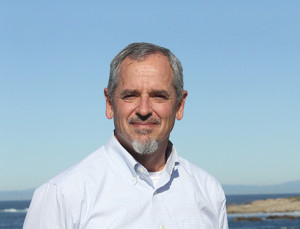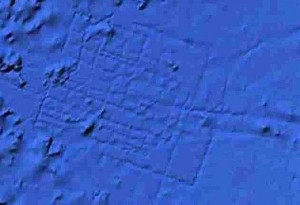conspiracy theory
Jaye, Michael
Michael Jaye is an Associate professor at the Naval Postgraduate School, in Monterey, California. He is a  confirmed catastrophist focused on cometary impacts. In a lecture to the Geological Society of America in 2011(a) he describes two major events in the Earth’s history that had profound effects on the earth and life on it. The first was a double impact 65 million years ago and is generally accepted to have led to the demise of the dinosaurs and the second 460,000 years ago.
confirmed catastrophist focused on cometary impacts. In a lecture to the Geological Society of America in 2011(a) he describes two major events in the Earth’s history that had profound effects on the earth and life on it. The first was a double impact 65 million years ago and is generally accepted to have led to the demise of the dinosaurs and the second 460,000 years ago.
In an April 2015 lecture entitled Resolving the Problem of Atlantis, he expands on his original ideas(b) introducing a third event 13,000 years ago when another cometary impact brought an enormous amount of water to earth, which linked together previously disconnected seas and oceans.
At this point, he introduces Atlantis or more correctly the alleged Google image of Atlantis in the Atlantic Ocean that Jaye now claims was the Plain of Atlantis. As I have previously stated, the image in question shows lines that would have been kilometres in width and could not have been streets and so are also too wide to have been the irrigation ditches described by Plato. The U.S. National Oceanic and Atmospheric Administration has also debunked the silly Atlantis claims generated by these images(e). However, the problem remains, that some people believe what they want to believe not what can be demonstrated.
shows lines that would have been kilometres in width and could not have been streets and so are also too wide to have been the irrigation ditches described by Plato. The U.S. National Oceanic and Atmospheric Administration has also debunked the silly Atlantis claims generated by these images(e). However, the problem remains, that some people believe what they want to believe not what can be demonstrated.
Jaye does not accept the explanation for these anomalous lines given by Google, joining conspiracy theorists in the process. I personally think that he should stick to geology and leave the subject of Atlantis to others.
Jaye has also given me a link(c) to a video of one of his lectures. In it, one of his claims is that most of the Earth’s water is the result of a collision with an icy comet around 12,800 years ago. However, the widespread distribution of fossil fish far exceeds the areas occupied by original unconnected bodies of water suggested by Jaye. This is just one of many inaccuracies offered by him. His ideas can be read on Graham Hancock’s website(d) and in his slender 2017 66-page book, The Worldwide Flood [1549].
Jaye has failed to explain how his claim of a relatively recent acquisition by the Earth of most of its water, can account for the recurring Ice Ages that our planet has endured over many millions of years. Ice Age theory is well established, but according to him, the Earth would not have had enough water over that timespan to produce the glaciers that enveloped large areas of the globe, sometimes to a depth of 3 or 4 km, leading to the measurable isostatic rebound we still experience today.>>Incidentally, where I’m sitting right now had a glacier of around a kilometre thick overhead during the last Ice Age and is thought to be the last part of Ireland to be deglaciated.<<
!
Jaye also published a paper entitled Mu and the Worldwide Flood, in which he found some support for the late Flood theory.(g)
Carl Feagans, an ardent sceptic, has published a lengthy refutation of Jaye’s theories, in particular his idea of a global flood.(f)
(b) The Explorers Club – Events – NYC – Public Lecture Series feat. Michael Jaye (archive.org)
(c) https://vimeo.com/126026401
(d) https://grahamhancock.com/jayem2/
(e) https://oceanservice.noaa.gov/facts/atlantis.html
(f) https://ahotcupofjoe.net/2019/11/the-pseudoarchaeology-of-michael-jayes-worldwide-flood/
(g) Mu and the Worldwide Flood | My-Mu.com Guest Blog (archive.org)
